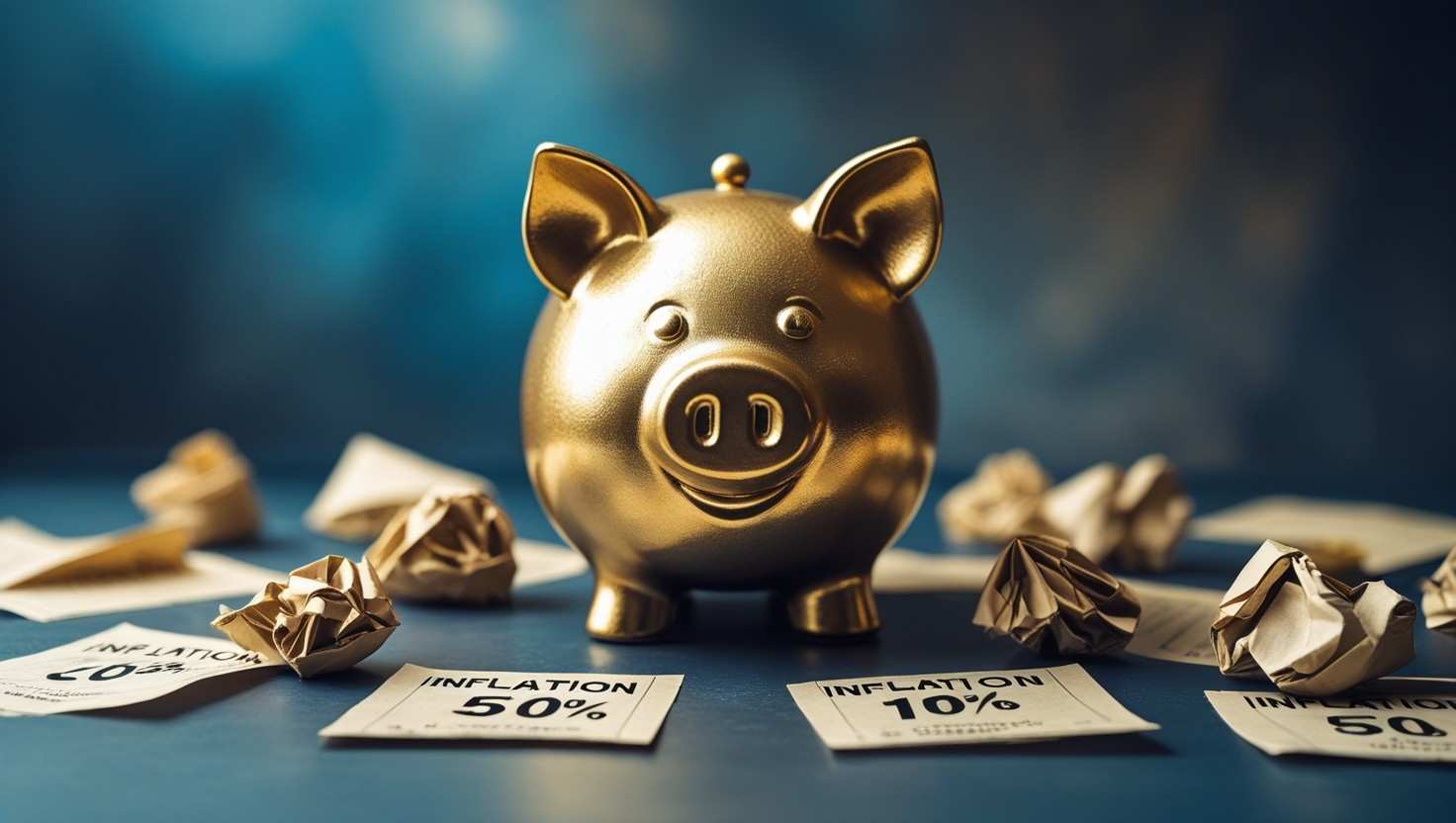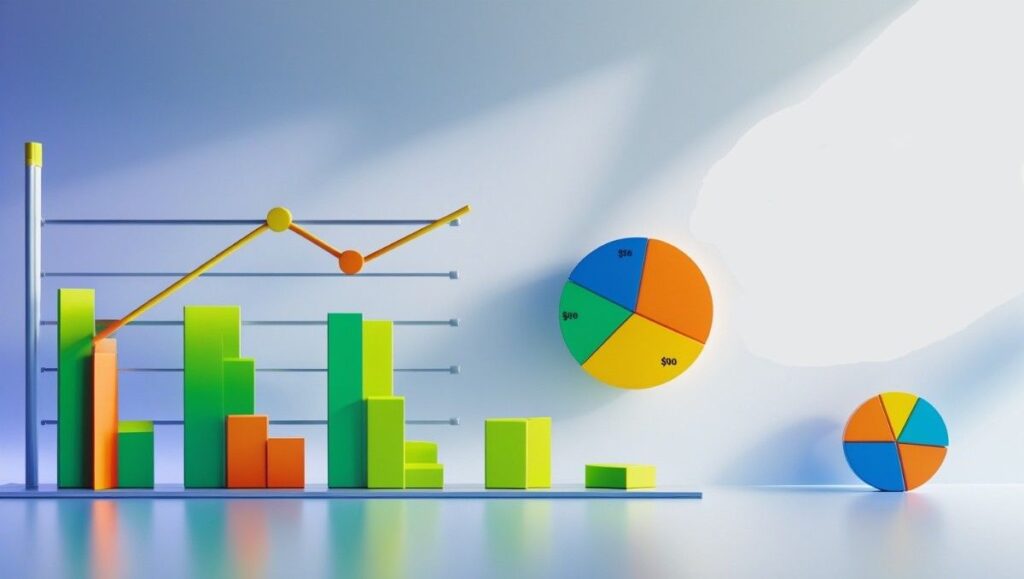
Inflation has gradually become a focal point in financial discussions, especially in the wake of recent economic fluctuations. While it might sound like a complex economic concept, understanding inflation is crucial for protecting your financial well-being. At its core, inflation refers to the general increase in prices over time, leading to a decline in the purchasing power of money.
Imagine walking into a grocery store with $100 today and buying a set of groceries. A year later, you might need $120 to buy the same items. That difference in cost represents inflation. The implications of inflation stretch beyond higher prices — it can significantly erode the value of your savings, making it essential to learn how to mitigate its impact.
In this comprehensive guide, we will explore what inflation is, what causes it, how it differs from a recession, and actionable strategies to safeguard your savings against its effects.
What Is Inflation?
Inflation can be simply defined as the general increase in the prices of goods and services over time, leading to a reduction in the purchasing power of money. Essentially, the same amount of money buys fewer goods and services than it did previously.
To put this in perspective, think about the prices of everyday items like bread, milk, or fuel. Ten years ago, $100 could purchase a basket of groceries. Today, that same $100 might only cover half the basket, or even less. That shrinking purchasing power is a direct result of inflation.
However, not every increase in prices qualifies as inflation. For example, if the cost of fuel rises due to a temporary global supply shortage or a tax increase, this is not considered inflation. True inflation is characterized by a sustained, overall increase in prices across various sectors of the economy.

What Causes Inflation?
Inflation can be driven by various factors, many of which are interconnected. The primary causes include:
- Increased Money Supply: When a central bank prints more money, the overall supply increases. If the supply of goods and services remains constant while more money is circulating, prices tend to rise.
- Currency Devaluation: A government may deliberately lower the value of its currency to increase exports. However, a weaker currency also makes imports more expensive, leading to higher domestic prices.
- Government Spending: Large-scale government projects or stimulus spending can flood the economy with money, increasing demand and pushing prices up.
- Supply Chain Disruptions: Natural disasters, pandemics, or geopolitical conflicts can disrupt production, reducing supply and causing prices to surge.
A recent example can be seen in Egypt, where inflation rates remained relatively high in 2024. According to data from the Central Bank, inflation decreased slightly to 24.4% in October, down from 25% in September. Despite the drop, the persistent double-digit inflation rate indicates ongoing economic challenges that can erode household savings over time.
How Does Inflation Affect Your Savings?
Imagine that you saved $10,000 in a basic savings account with a 3% annual interest rate. If the inflation rate is 6% per year, the real value of your savings actually decreases. While your account balance may grow to $10,300, the purchasing power of that money effectively drops, as goods and services now cost 6% more.
For example:
- If the inflation rate is 6% over five years, your $ 10,000 savings will lose approximately $2,430 in purchasing power.
- If the inflation rate rises to 8% annually, the loss in purchasing power could reach $3,110 over the same period.
Thus, failing to account for inflation when planning your savings strategy can erode your wealth over time.
How to Protect Your Savings from Inflation
Inflation can gradually erode the purchasing power of your savings, making it essential to adopt effective strategies to mitigate its impact. The good news is that there are multiple ways to protect your wealth and even grow it during inflationary periods. Below, we will explore several comprehensive strategies, each with actionable steps and practical examples to help you safeguard your financial future.
1. Assess and Adjust Your Spending Patterns to Identify Areas of Increased Costs
Inflation does not affect all spending categories equally, making it essential to assess and adjust your spending patterns to identify areas where costs have risen the most. Start by reviewing your monthly expenses over the past year to pinpoint categories that have experienced significant price increases, such as groceries, fuel, utilities, and rent. For instance, if your grocery bill has increased by 20% while transportation costs have risen by 15%, it is a clear indication that these areas require closer attention. Utilize budgeting apps or financial tracking tools to monitor your spending habits effectively and compare current costs with those from previous months. Additionally, consider creating a spending analysis report to visualize where inflation is impacting your finances most significantly. This approach allows you to make data-driven decisions, prioritize essential expenses, and identify areas where you can cut back without compromising your quality of life.
2. Revisit and Reallocate Your Budget to Optimize Your Spending Plan

When inflation drives up the cost of essential goods and services, it is crucial to revisit and reallocate your budget to accommodate these changes. Traditional budgeting frameworks, such as the 50/30/20 rule, may no longer be effective when prices are rising rapidly. Instead, consider adjusting to a 60/20/20 model, where 60% of your income is allocated to essentials, 20% to discretionary spending, and 20% to savings and investments. This shift allows you to allocate more resources to essential expenses like rent, utilities, and food, while still maintaining a savings buffer. Additionally, reassess your discretionary spending and look for areas where you can reduce costs. For example, consider dining out less frequently, canceling unused subscriptions, or opting for more affordable entertainment options. By adjusting your budget strategically, you can effectively manage increased living costs without depleting your savings or accumulating unnecessary debt.
3. Cut Unnecessary Costs Without Sacrificing Quality of Life
Cutting unnecessary costs does not mean compromising your quality of life; rather, it involves identifying areas where you can spend less without sacrificing essential needs. Start by conducting a comprehensive review of your recurring expenses, such as subscriptions, memberships, and utility bills. Are you still paying for a streaming service you rarely use? Could you switch to a more affordable mobile plan? Negotiating lower rates on essential services or eliminating unused subscriptions can lead to significant monthly savings. Additionally, consider reducing energy consumption by adopting simple habits like turning off lights when not in use, using energy-efficient appliances, and limiting heating or cooling usage. In the area of transportation, explore carpooling, biking, or using public transit to cut down on fuel expenses. Implementing these small yet impactful changes can free up extra cash that can be redirected toward savings or investments, helping you stay financially resilient in the face of inflation.
4. Plan and Optimize Meal Expenses to Save on Groceries and Dining
Inflation often hits the food sector particularly hard, driving up grocery bills and restaurant prices. To counteract rising food costs, consider adopting meal planning and bulk purchasing strategies. Start by creating a weekly meal plan based on affordable staples such as rice, pasta, beans, and seasonal produce. Planning meals in advance helps you avoid impulsive purchases and minimizes food waste. Additionally, buying non-perishable items in bulk can significantly lower the per-unit cost of essential goods, providing immediate savings.
For instance, instead of purchasing single-serving packages of snacks, opt for larger quantities and divide them into smaller portions at home. Cooking in batches is another effective strategy; prepare large portions of meals that can be stored and reheated throughout the week, reducing the need for frequent grocery trips or costly takeout. Implementing these meal optimization techniques can not only cut food expenses but also create a more sustainable and cost-effective approach to meal preparation.
5. Consider a Side Hustle to Generate Additional Income Streams

When inflation reduces the purchasing power of your primary income, generating additional income through a side hustle can provide a crucial financial cushion. Assess your skills and interests to identify potential freelance or gig economy opportunities. For instance, if you have expertise in writing, graphic design, or social media management, consider offering your services on platforms like Upwork, Fiverr, or Freelancer.
Alternatively, if you enjoy crafting or creating digital products, you could sell items on Etsy or eBay. Teaching or tutoring in a specific subject area is another viable side hustle, allowing you to monetize existing knowledge. The key is to choose a side hustle that aligns with your skills, schedule, and interests, ensuring that it remains sustainable in the long run. The additional income generated can be directed toward building an emergency fund, investing in inflation-resistant assets, or simply offsetting the increased cost of living.
6. Invest for Long-Term Growth to Outpace Inflation
Investing strategically can be one of the most effective ways to protect your savings from the eroding effects of inflation. Unlike traditional savings accounts with low interest rates, investment assets such as stocks, real estate, and bonds have the potential to generate returns that outpace inflation over time. Start by diversifying your portfolio to include a mix of stocks, bonds, and real assets like gold or real estate. Stocks, particularly those in growth sectors like technology and healthcare, can offer substantial returns but also come with higher risk.
Bonds provide stability and consistent income, making them ideal for conservative investors. Additionally, consider inflation-protected securities, such as Treasury Inflation-Protected Securities (TIPS), which adjust in value based on inflation rates. Real estate can also serve as a hedge against inflation, generating rental income and appreciating in value over time. By investing with a long-term perspective, you can not only preserve the value of your savings but also create opportunities for wealth accumulation.
7. Utilize Financial Tools and Platforms for Structured Savings and Investments
Financial technology platforms can streamline the process of managing money during inflationary periods, offering structured savings plans and investment options. Platforms like Money Fellows enable users to participate in organized savings circles, allowing them to pool funds and receive lump-sum payouts that can be invested in inflation-resistant assets. Additionally, setting up automated transfers to a high-yield savings account ensures consistent saving while reducing the temptation to spend. Financial apps can also provide real-time spending analysis, helping you stay on track with your budget and monitor the impact of inflation on your finances. By leveraging these digital tools, you can maintain financial discipline, optimize your savings, and take advantage of investment opportunities that safeguard your wealth against inflation.
8. Build an Emergency Fund as a Financial Safety Net

During periods of economic uncertainty, a well-funded emergency fund can provide a vital safety net, protecting you from unexpected expenses. Aim to save at least 3-6 months of living expenses to cover essential costs like rent, utilities, and groceries. If inflation remains persistently high, consider increasing this buffer to 9-12 months, ensuring that you have sufficient funds to navigate potential financial setbacks. Store your emergency fund in a high-yield savings account or money market account to earn interest while keeping your funds accessible. Regularly review and adjust the size of your emergency fund to reflect changes in living costs, ensuring that your financial safety net remains adequate in the face of rising prices.
Conclusion: The Need for Inflation-Proof Savings Strategies
Inflation is an inevitable aspect of economic cycles, but it doesn’t have to drain your savings. By understanding how inflation affects purchasing power and adopting proactive financial strategies, you can protect and even grow your wealth over time.
Evaluate your spending, reassess your budget, cut unnecessary expenses, and explore investment options that have historically outpaced inflation. Whether it’s stocks, real estate, or diversified mutual funds, strategic investments can help your savings maintain — and even increase — their real value.
Platforms like Money Fellows also provide opportunities to pool resources, invest in inflation-resistant assets, and protect your savings in a structured, secure manner.
Now is the time to review your financial plan and take actionable steps to safeguard your savings against the silent wealth eroder — inflation.


